You Don’t Have ‘Bad Hair’—You Just Haven’t Been Properly Introduced
After spending more years than I can count behind the salon chair, I’ve heard one thing over and over again. Most people genuinely believe they have “bad hair.” It’s too frizzy, too flat, too stubborn… you name it. They sit down, exhausted from losing a battle with their own reflection every single morning. And I always tell them the same thing: You don’t have bad hair. You just haven’t learned its language yet.
In this article
Let’s be real, the whole idea of a “bad hair day” makes it sound like your hair woke up and chose violence. That’s just not how it works. Your hair is a fiber, and it responds to basic science—things like moisture, heat, and the products you use. The frustration you feel? It comes from a simple misunderstanding, not a personal vendetta from your follicles.
My job isn’t just to give a great haircut; it’s to translate what your hair is trying to tell you. This isn’t about some miracle product or a secret trick that costs a fortune. It’s about building a foundation of knowledge so you can finally start working with your hair, not waging a daily war against it. Once you get what it needs and why, the fight is over. I promise.
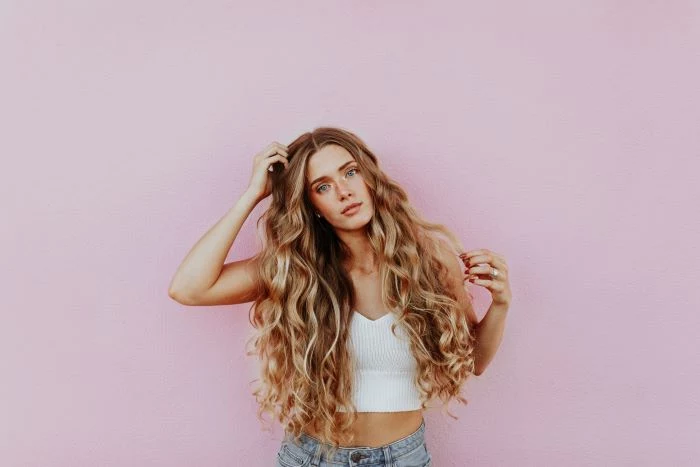
First Things First: Let’s Get to Know Your Hair
You wouldn’t try to build a deck without knowing the difference between pine and oak, right? The same goes for your hair. Before you can manage it, you need to understand what you’re working with. This is the single most important step, and honestly, it’s the one most people skip.
What a Single Strand Looks Like (And Why It Matters)
Each little strand of your hair is made of a few key layers. Knowing this is the key to making it look good.
- The Cuticle: This is the outer layer, and it looks a lot like shingles on a roof or the scales of a pinecone. When these “shingles” lie flat and smooth, your hair reflects light and looks shiny. When they’re lifted and ruffled, your hair looks dull, feels rough, and tangles like crazy. Pretty much every hair problem you can name starts right here.
- The Cortex: This is the main event—the middle layer that gives your hair its strength, stretchiness, and color. When we color or chemically treat hair, we’re going straight to the cortex.
- The Medulla: The very center of the hair shaft. Not everyone has one, especially people with very fine hair, and its purpose is still a bit of a mystery. For our purposes, it doesn’t really affect daily styling.
So, why the science lesson? Because nearly every conditioner, serum, and styling technique is designed to do one thing: smooth that cuticle. That’s the whole game right there.
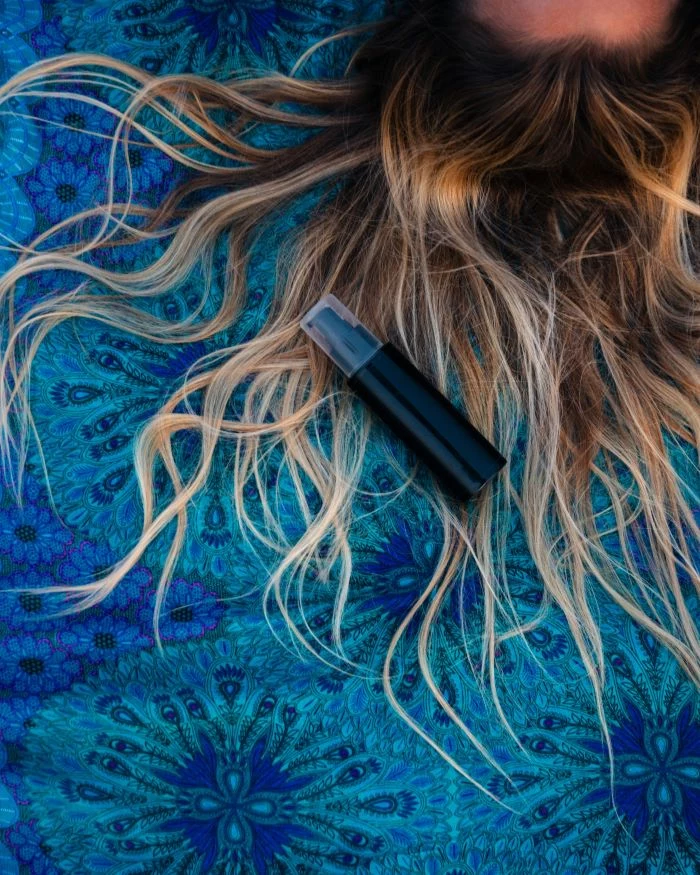
Porosity: The Real Secret to Happy Hair
Okay, if you learn only one thing today, let it be this. Porosity is your hair’s ability to absorb and hold on to moisture, and it’s a total game-changer. It’s all about how open or closed that cuticle layer is.
Quick Test: Drop a single, clean strand of your hair into a glass of water. If it floats for a while, you likely have low porosity. If it sinks slowly, it’s normal. And if it drops like a rock, you’ve got high porosity hair.
If you have LOW porosity hair (the floater), your cuticles are packed down tight. This hair is often healthy and shiny, but it resists moisture. Products tend to just sit on top, leading to buildup. You need lightweight, water-based products. Heavy creams and oils will just make it greasy. A great drugstore option is the Kinky-Curly Knot Today Leave In Detangler (around $13 at Target), which is super light. For a salon-quality choice, look for volumizing sprays that won’t weigh you down.
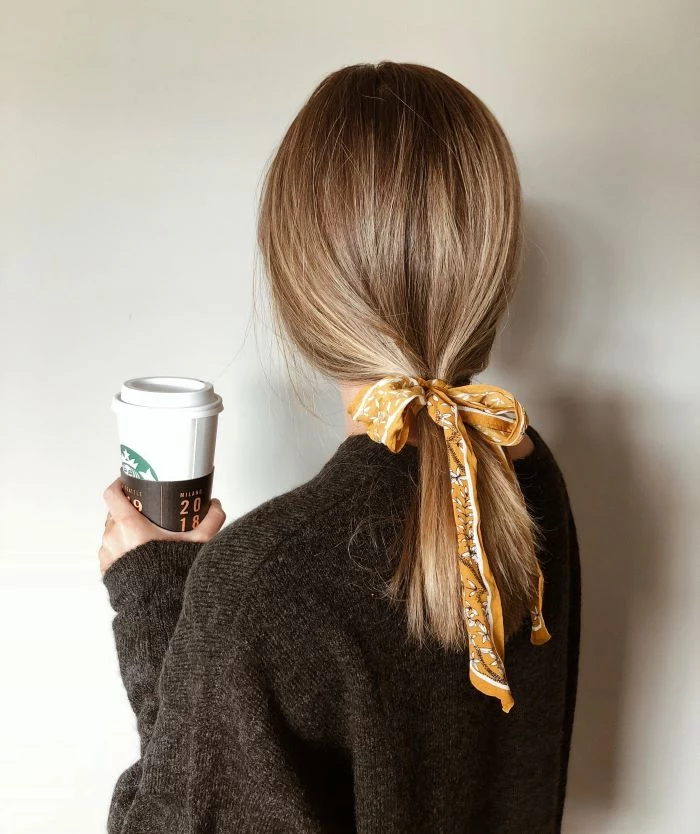
If you have HIGH porosity hair (the sinker), your cuticles are raised with gaps. This can be genetic or from damage. Your hair soaks up moisture like a sponge… but loses it just as fast. This is why it can feel dry and frizzy even when you load it up with conditioner. Your hair is thirsty and needs richer products to seal in that moisture. On a budget, the Shea Moisture Manuka Honey & Mafura Oil Intensive Hydration Masque (about $12) is a lifesaver. If you’re looking to invest, the Olaplex No. 6 Bond Smoother (around $30) is fantastic for smoothing and sealing that cuticle.
pH Balance: The Invisible Force Field
Your hair and scalp are naturally a little acidic, which keeps that cuticle layer shut tight. But things like tap water (which is often alkaline) and harsh shampoos can throw that balance off, causing the cuticle to lift open. Instant frizz and tangles. A classic salon trick to fix this is an Apple Cider Vinegar rinse. It’s cheap, easy, and incredibly effective.
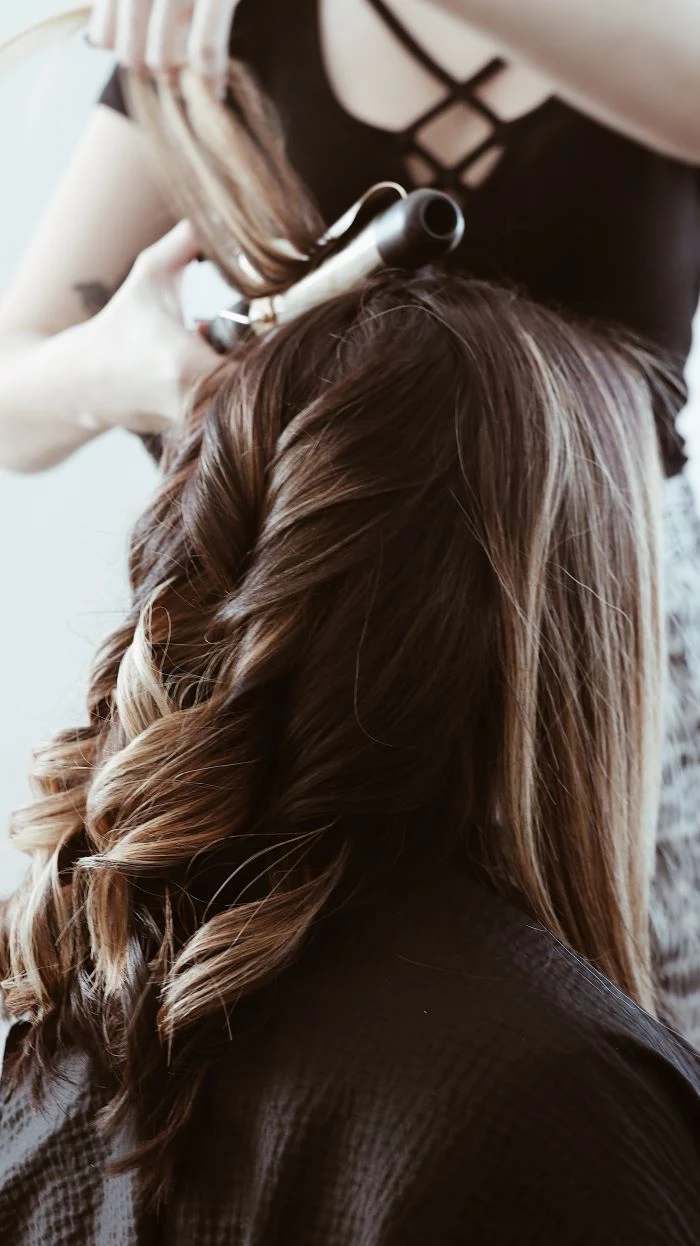
My Go-To DIY Rinse: Mix 1 part apple cider vinegar with about 4 parts water in a spray bottle. After you’ve shampooed and conditioned, spray it all over your hair. Let it sit for a minute, then give it a light rinse with cool water. And don’t worry, the smell completely disappears once your hair is dry!
Salon Secrets You Can (and Should) Use at Home
In the salon, we need techniques that work every single time. These aren’t magic; they’re just based on the science we just talked about. Start doing these things at home, and you’ll build a much better foundation for your hair.
How to Wash Your Hair Like a Pro
It’s less about how often you wash and more about how you do it. I see people in the shower scrubbing their hair like they’re trying to get graffiti off a wall. Please stop!
- Use Warm, Not Hot, Water: Hot water feels nice, but it can strip your scalp’s natural oils, making it either dry or greasy. Warm water is perfect for opening the cuticle just enough to let your shampoo do its job.
- Shampoo Your SCALP, Not Your Ends: Lather a quarter-sized amount of shampoo in your hands first. Then, focus all your effort on massaging your scalp with the pads of your fingers (never your nails!). The suds that run down your hair are more than enough to clean the ends, which are the oldest and most fragile part of your hair.
- Condition Your ENDS, Not Your Scalp: Squeeze the excess water out of your hair first. Then apply conditioner from the mid-lengths down. Your scalp makes its own conditioner (sebum); adding more at the roots is why so many people complain about greasy, flat hair. Let it sit for at least 2-3 minutes!
- Finish with a Cool Rinse: This is the final step for a reason. Cool water helps seal the cuticle back down, locking in the moisture from your conditioner and giving you way more shine and less frizz.
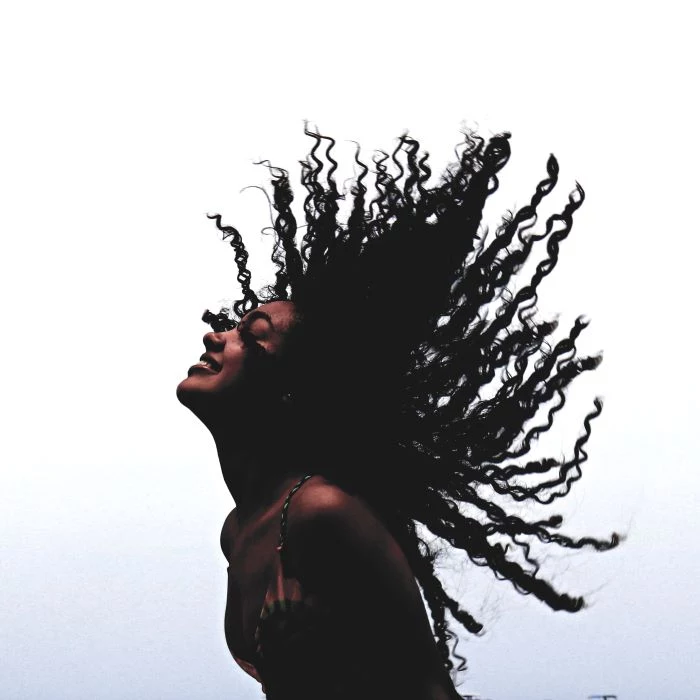
How You Dry Your Hair Matters More Than You Think
The second your hair is wet, it’s at its most fragile. How you treat it right after the shower sets the stage for how it will look all day.
A Quick Tip You Can Try Tonight: Stop rubbing your hair with your towel! That rough, vigorous rubbing is the fastest way to rough up your cuticle and create frizz. Instead, gently squeeze and blot the water out. Better yet, grab an old, soft t-shirt or a microfiber towel (you can find them for $10-$20). They absorb water without causing friction. This one tiny change can make a massive difference.
Oh yeah, and that little plastic nozzle that came with your blow dryer? It’s not an optional accessory. Use it! It directs the airflow down the hair shaft, from root to tip. This forces the cuticle to lie flat, giving you that smooth, polished look. Without it, you’re just creating a chaotic tornado of air that blasts the cuticle wide open.
Your Environment is Messing With Your Hair
Your hair doesn’t live in a bubble; it’s constantly reacting to the world around it. The techniques that work in a dry climate might fail completely in a humid one. You have to consider your environment!
Humidity vs. Your Hair
In humid air, your hair (especially if it’s porous) will try to absorb all that extra moisture, causing the hair shaft to swell and the cuticle to pop up. Hello, frizz. The trick here is to use products that create a protective barrier. Serums with silicone are great for this because they coat the hair and block moisture from getting in.
Heads up for my curly-haired friends! I know, I know, silicones can be a dirty word in the curly community because some types build up. But in a humid climate, they can be a necessary evil. The secret is to look for water-soluble silicones, like Dimethicone Copolyol or anything with a “PEG-” prefix. They give you frizz protection without the heavy buildup that blocks out moisture in the long run.
That Invisible Gunk from Hard Water
If you live in an area with hard water, you’re coating your hair in minerals like calcium and magnesium every time you shower. Over time, this creates a dull film that makes your hair feel dry, look brassy, and refuse to cooperate. The solution is a good clarifying or chelating shampoo. A classic is the Malibu C Un-Do-Goo Shampoo. Use it just once a month to hit the reset button and strip away all that mineral gunk. A showerhead filter can also be a worthy investment.
Your New Daily Playbook
Now that you’re armed with all this info, you can finally make smart choices. It’s all about small, consistent habits that stop problems before they even start.
The Nighttime Routine: Your Secret Weapon
A cotton pillowcase is like velcro for your hair. As you toss and turn, it creates friction, tangles, and frizz. The single best, easiest investment you can make is a silk or satin pillowcase. Now, a pure silk one can be pricey (upwards of $70). But you can get a satin pillowcase on Amazon or at Target for $15-$20, and honestly, it does about 90% of the job. Your hair just glides over it. I tell every client this, and the ones who try it never go back.
Also, never sleep with soaking wet hair! Put long hair in a loose braid or twist it up into a high, loose bun (often called a “pineapple”) to prevent tangles.
Using Dry Shampoo the Smart Way
Most people use dry shampoo as a panic button when their hair is already an oil slick. A pro uses it proactively. On day two, even if your hair looks clean, spray a little dry shampoo at the roots from about 8-10 inches away. Let it sit for two full minutes—this gives the powder time to absorb oils as they appear. Then, massage it in with your fingers. This prevents the grease from ever taking over and gives you a nice little volume boost.
When Things Go Wrong: Advanced Fixes
\p>Sometimes, even with the best routine, your hair just feels… off. Here’s how we hit the reset button in the salon.
The Strategic Use of Heat Tools
I’m not against hot tools, but you have to respect them. And a heat protectant is non-negotiable. It’s like a seatbelt for your hair. But the biggest mistake I see is the temperature.
Believe me, I learned this the hard way years ago, long before I knew any better. I cranked a cheap flat iron to its highest setting and went to town on my bangs. I heard a sizzle and the smell of burnt hair was unforgettable. I completely fried them. Don’t be me. You almost never need 450 degrees. For finer hair, stay under 350°F. For coarser hair, you can go up to 400°F, but that’s it. One slow, smooth pass is so much better than five quick, frantic ones.
When to Call a Professional (Seriously)
Listen, some things are just not meant for your bathroom sink. Please, leave chemical services like bleaching, relaxing, or strong keratin treatments to licensed professionals. The risk of a chemical burn that turns your hair into gummy, breakable mush is just too high. When the only solution is to cut it all off, a $20 box of bleach suddenly doesn’t seem like such a bargain.
And on a more serious note, your hair can be a window into your overall health. If you experience sudden, major hair shedding, bald patches, or a scalp that’s constantly itchy, flaky, or has sores, it’s time to see a doctor or a dermatologist. That’s beyond the scope of a stylist, and it’s important to know the difference.
The goal here is to shift your whole mindset. You’re not fighting with your hair anymore; you’re entering a partnership. It’s about listening to it—if it feels dry, give it moisture; if it feels heavy, clarify it. By understanding the ‘why’ behind it all, you can finally move from frustration to confidence. You have everything you need to give yourself a good hair day, every day.
Inspirational Gallery
The Golden Rule of Heat: Your flat iron or curling wand shouldn’t be set to its maximum temperature. For fine or color-treated hair, stay below 350°F (175°C). Thicker, coarser hair can handle up to 400°F (200°C), but rarely is anything higher necessary. A good heat protectant, like the TRESemmé Keratin Smooth Heat Protect Spray, isn’t just a suggestion—it’s the barrier that prevents your hair’s cuticle from frying and lifting, which is the root cause of frizz and dullness.
- Less frizz and static when you wake up.
- Reduced tangling and breakage.
- Hair that stays hydrated longer.
The secret? Switching from a cotton pillowcase to silk or satin. Cotton absorbs moisture from your hair, while the smooth surface of silk allows your strands to glide, preserving your style and protecting the cuticle from friction damage overnight. It’s a surprisingly effective, low-effort upgrade to your routine.
Is professional salon shampoo really that different from a drugstore bottle?
Often, yes. While both cleanse your hair, professional formulas from brands like Redken or Pureology typically contain higher concentrations of quality ingredients and fewer harsh detergents. They are formulated for specific issues—like protecting color or adding volume—with more sophisticated technology. Drugstore finds can be fantastic for uncomplicated hair, but if you have specific struggles, the targeted investment in a salon product might just be the translator your hair has been asking for.
Your hair can stretch up to 30% of its length when wet without breaking. However, this elasticity is also a sign of vulnerability.
When hair is saturated with water, the protective cuticle layer swells and lifts slightly, exposing the inner cortex. This is its weakest state. Aggressive towel rubbing or brushing wet hair can cause stretching, snapping, and permanent damage to the cuticle. Always blot your hair gently with a microfiber towel and use a wide-tooth comb, starting from the ends and working your way up.
Sulfate-Free Cleansers: These use milder cleansing agents that don’t strip your hair of its natural oils. Ideal for dry, colored, or keratin-treated hair. Look for brands like L’Oréal’s EverPure line.
Traditional Sulfates (SLS/SLES): These create that rich lather we often associate with being clean. They’re excellent for very oily hair or removing heavy product buildup but can be too harsh for sensitive scalps or dry hair types.
The right choice depends entirely on your hair’s needs, not a universal
Before you blame your shampoo, check your water. Hard water, rich in minerals like calcium and magnesium, can leave a film on your hair. This buildup prevents moisture from penetrating the hair shaft, resulting in dryness, dullness, and even a brassy tint on blondes. A simple clarifying shampoo used once a week or a showerhead filter can make a world of difference, allowing your products to finally work as intended.
The next frontier in hair health isn’t on your ends—it’s at the root. The
Ever notice your hair feeling dull or weighed down? You might not need a new conditioner; you might just need to remove product buildup. A simple, effective DIY clarifying rinse can reset your hair’s canvas.
- Mix one part apple cider vinegar with four parts water in a spray bottle.
- After shampooing and conditioning, spritz the mixture all over your hair and scalp.
- Let it sit for two minutes, then rinse thoroughly with cool water to seal the cuticle.
This will help restore natural shine and bounce without stripping your hair.
Think of split ends like a frayed rope: once the fibers have separated, you can’t magically fuse them back together. Products advertised to










